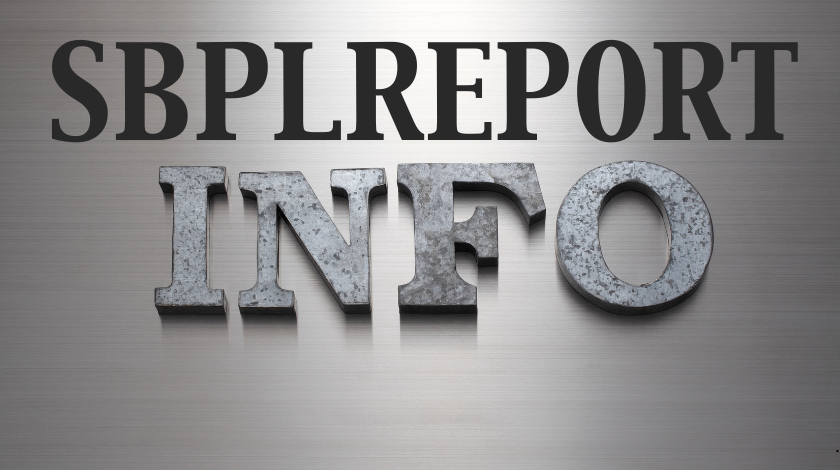In today’s fast-paced world, accessing accurate and timely information is critical for decision-making, especially in sectors such as finance, healthcare, and business operations. One such tool that has gained traction in recent years is the SBPL Report. This article aims to delve into what the SBPL Report is, its purpose, how it works, and its implications for various industries.
Table of Contents
ToggleWhat is SBPL Report?
The SBPL Report, short for State-Based Performance Level Report, is a detailed document that provides insights into the performance metrics of various organizations, projects, or processes based on state-level data. This report is particularly useful for organizations that operate across different states, as it allows them to compare performance across various regions and identify areas for improvement.
Key Components of SBPL Reports
- Performance Metrics: The report outlines key performance indicators (KPIs) that help organizations assess their effectiveness and efficiency.
- Comparative Analysis: It includes data comparisons across different states or regions, enabling organizations to benchmark their performance.
- Trends and Insights: The SBPL Report offers insights into emerging trends that may affect performance metrics, providing a foresight that can guide strategic planning.
- Recommendations: Based on the data analysis, the report often concludes with actionable recommendations aimed at enhancing performance.
Importance of SBPL Report
The SBPL Report serves multiple purposes across various industries:
1. For Businesses
Organizations can use the SBPL Report to identify which regions are underperforming and require strategic interventions. By analyzing performance metrics, businesses can allocate resources more effectively and tailor their strategies to meet specific regional challenges.
2. For Healthcare Providers
In the healthcare sector, SBPL Reports can help providers assess the effectiveness of healthcare services across different states. By comparing patient outcomes, hospitals can identify best practices and areas needing improvement.
3. For Policymakers
Policymakers can leverage the insights from SBPL Reports to inform policy decisions. Understanding the performance levels of various sectors can help in crafting more effective policies aimed at boosting regional development.
4. For Investors
Investors can use the data provided in SBPL Reports to gauge the performance of companies in different regions. This information can influence investment decisions, as it highlights potential risks and opportunities in various markets.
How SBPL Reports Work
Data Collection
The foundation of an SBPL Report lies in the data it compiles. Data is typically collected from various sources, including:
- Surveys: Gathering information from employees, customers, or stakeholders to assess satisfaction and performance.
- Government Databases: Utilizing publicly available state-level data to compare performance metrics.
- Internal Records: Analyzing company-specific data to evaluate internal performance.
Data Analysis
Once the data is collected, it undergoes rigorous analysis. This process may involve:
- Statistical Analysis: Using statistical methods to draw meaningful insights from the data.
- Visualization: Presenting data in a visual format (charts, graphs) to enhance understanding.
- Trend Analysis: Identifying patterns over time to forecast future performance.
Reporting
The final report is compiled and formatted for easy comprehension. It is typically divided into sections that highlight different aspects of performance, trends, and actionable insights.
Challenges in Creating SBPL Reports
While the SBPL Report is a valuable tool, creating it comes with challenges:
- Data Quality: Ensuring the accuracy and reliability of data is crucial. Poor quality data can lead to misleading conclusions.
- Timeliness: The fast-paced nature of many industries means that reports must be generated quickly to remain relevant.
- Integration of Data Sources: Combining data from multiple sources can be complex and time-consuming.
- Stakeholder Buy-In: Gaining support from all stakeholders for data collection and reporting processes can be a hurdle.
Future Trends in SBPL Reporting
As industries evolve, so too does the landscape of SBPL reporting. Some anticipated trends include:
- Increased Automation: Automation tools will likely streamline data collection and analysis, making SBPL reports more timely and accessible.
- Real-Time Reporting: Organizations may move towards real-time reporting capabilities, allowing for immediate insights and quicker decision-making.
- Enhanced Visualization: Advanced data visualization techniques will improve the comprehensibility of reports, making insights more actionable.
- Integration with AI: Artificial intelligence could play a role in predicting performance trends based on historical data, further enhancing the utility of SBPL reports.
Conclusion
The SBPL Report is an essential tool for organizations looking to enhance their performance through data-driven insights. By understanding its structure, significance, and potential challenges, stakeholders can leverage this report to make informed decisions that drive growth and improvement. As technology continues to advance, the future of SBPL reporting looks promising, offering even more precise and actionable insights for organizations across various sectors.




